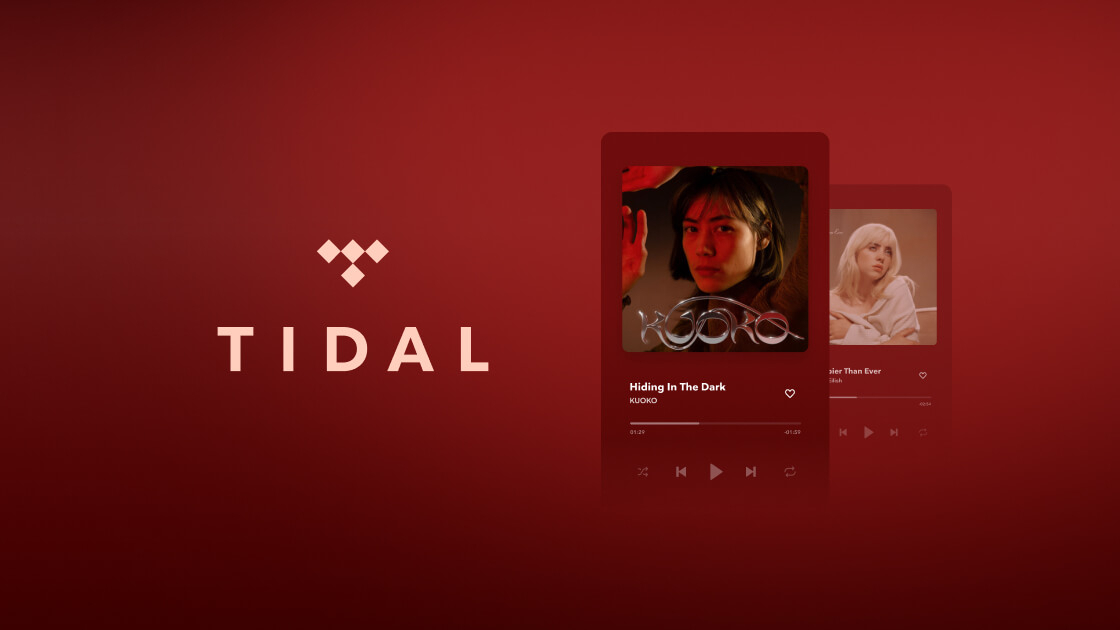Hi-res upgrade could make Tidal the audiophile’s choice – but there’s still one big problem
Incoming hi-res FLAC streams will give the service wider appeal for hi-fi fans, but rivals still have something over it

In a surprising turn of events last month, Tidal CEO Jesse Dorogusker announced in an Ask Me Anything (AMA) session on Reddit that the service would “soon” be adding lossless hi-res FLAC streams to its catalogue for HiFi Plus subscribers. These FLAC streams will sit alongside the tier’s current hi-res offering of MQA-powered streams that has given the service hi-res status since 2017 – long before Apple or Amazon joined the hi-res music streaming foray.
Yep, when mass-market streaming services were offering low-bitrate streams five years ago, Tidal decided to offer better quality – and to achieve that, it used (and licensed) MQA technology, a method of digitally packaging and storing studio master recordings as files small enough to stream. MQA side-stepped the issue of FLAC and other lossless formats requiring big file sizes that were hard to stream due to average bandwidth limitations at the time. As Dorogusker explained during the AMA, the MQA solution offered “a balance of quality and bandwidth” at a time when the two didn't massively go hand in hand. But now that bandwidth across networks has improved and streaming 24-bit FLAC is more viable (Amazon Music Unlimited now uses it for hi-res streaming, after all), that is no longer an obstacle to overcome. “Hi-res FLAC files will be big,” admitted Dorogusker, “but we think the infra is ready, even on mobile.”
For hi-fi fans, accessing those MQA-powered ‘Tidal Master’ streams on their system has involved owning MQA-compatible hardware – something that has been a point of differentiation for the service, and indeed a sticking point for owners of non-MQA kit. Without some sort of MQA decoder in your grasp, a Tidal HiFi Plus subscription is as useful as a kettle without water. But that won’t be the case for long…
With the addition of hi-res FLAC to Tidal, that hardware requirement will no longer be necessary as FLAC is indeed an open standard. Again, it’s the format Amazon Music uses to power its hi-res streams, and is actually also behind Tidal’s CD-quality lossless streams (available to subscribers of its cheaper HiFi tier). So, when FLAC arrives* HiFi Plus subscribers will have two different flavours of hi-res to choose from – perhaps for the foreseeable, or perhaps temporarily if Tidal decides to ditch MQA down the road – though how MQAs and FLACs will sit side by side and be labelled in the catalogue are yet to be seen.
While some people like the way MQA streams sound and will no doubt be pleased that MQA tracks will remain and their purposefully MQA-supporting hi-fi purchase can still be justified, many see this as good news for audio quality and accessibility. After all, FLAC is unquestionably lossless and, unlike Tidal’s current hi-res streams, will not require an MQA-compatible DAC or system component to unlock their optimal quality. You'll need equipment that can support hi-res audio, of course, but nothing proprietary.
Which type of stream will sound better on Tidal is what we hope to find out if we can, and is something that will no doubt spur a number of Reddit threads following the arrival of FLAC. But regardless, the opening up of Tidal’s hi-res offering will likely expand the HiFi Plus subscription base. If they can get over one thing, of course – the price.

Twenty years ago, the thought of paying £20 / $20 / AU$24 per month for unlimited access to all the world’s music in digital high-resolution quality might’ve sounded as far out as Marty McFly’s hoverboard featuring in the Argos catalogue. Fast forward to just a few years ago though and that kind of fee was an acceptable premium to pay over the lower-quality streaming offerings at the time. Now that Amazon, Apple and Qobuz offer hi-res streaming for between £9 / $9 / AU$9 (Amazon Music, if you’re a Prime subscriber) and £13 / $13 / AU$20 (for Qobuz) per month, however, Tidal’s subscription cost for hi-res is head, if not also shoulders, above the competition.
The latest hi-fi, home cinema and tech news, reviews, buying advice and deals, direct to your inbox.
In its defence, and actually to its credit, Tidal has made a big thing about it paying artists more than other streaming services do for their music. In an email sent to subscribers in March, Tidal stated that it ‘still pays artists more than the others with HiFi Plus – we charge a little more so we can distribute more to artists’. And Dorogusker confirmed as much last month.
Tidal had a ‘Direct Artist Payouts’ program whereby it paid artists directly ‘above and beyond royalties’ based on listeners’ ‘top artists’, claiming to have enrolled 70,000 artists and distributed $500,000 in payments. Last month, however, it changed tact by scrapping the initiative and redirecting money ($6m was the published figure) to its Tidal Rising to support emerging artists.
Giving more to artists is an admirable initiative that I’m sure many Tidal HiFi Plus subscribers will be on board with. But I’m also sure that the subscription cost is preventing some from transitioning from cheaper rival services. And when Spotify HiFi eventually offers CD-quality streaming, that will undoubtedly tug some subscribers away, too.
Dorogusker also stated that Tidal “continue[s] to experiment with new ways to unlock better economic value for artists”, so if the company can find a way to lower its hi-res membership fees while maintaining its artist-first focus – easier said than done, I’m sure – it’ll be very difficult to point hi-fi fans anywhere else when FLAC is onboard. After all, in my mind it has a more comprehensive library than Qobuz, a better user experience than Amazon Music, and is more hi-fi-friendly than Apple Music. That's why it remains What Hi-Fi?'s number one pick as the all-round best streaming service. Its higher price just highlights the value of rivals.
*While Dorogusker’s choice of word initially was “soon”, later in the session he said “we will come back here and tell y'all specifically when”, with another Tidal spokesperson commenting that it would be “later this year”. (Blimey, to think that Spotify said that about its yet-to-arrive HiFi service three years ago…)
MORE:
MQA has gone into administration: what does this mean for Tidal and supported products?
Hi-res music streaming services compared: which should you subscribe to?
High-resolution audio: everything you need to know
MP3, AAC, WAV, FLAC: all the audio file formats explained

Becky is a hi-fi, AV and technology journalist, formerly the Managing Editor at What Hi-Fi? and Editor of Australian Hi-Fi and Audio Esoterica magazines. With over twelve years of journalism experience in the hi-fi industry, she has reviewed all manner of audio gear, from budget amplifiers to high-end speakers, and particularly specialises in headphones and head-fi devices.
In her spare time, Becky can often be found running, watching Liverpool FC and horror movies, and hunting for gluten-free cake.
